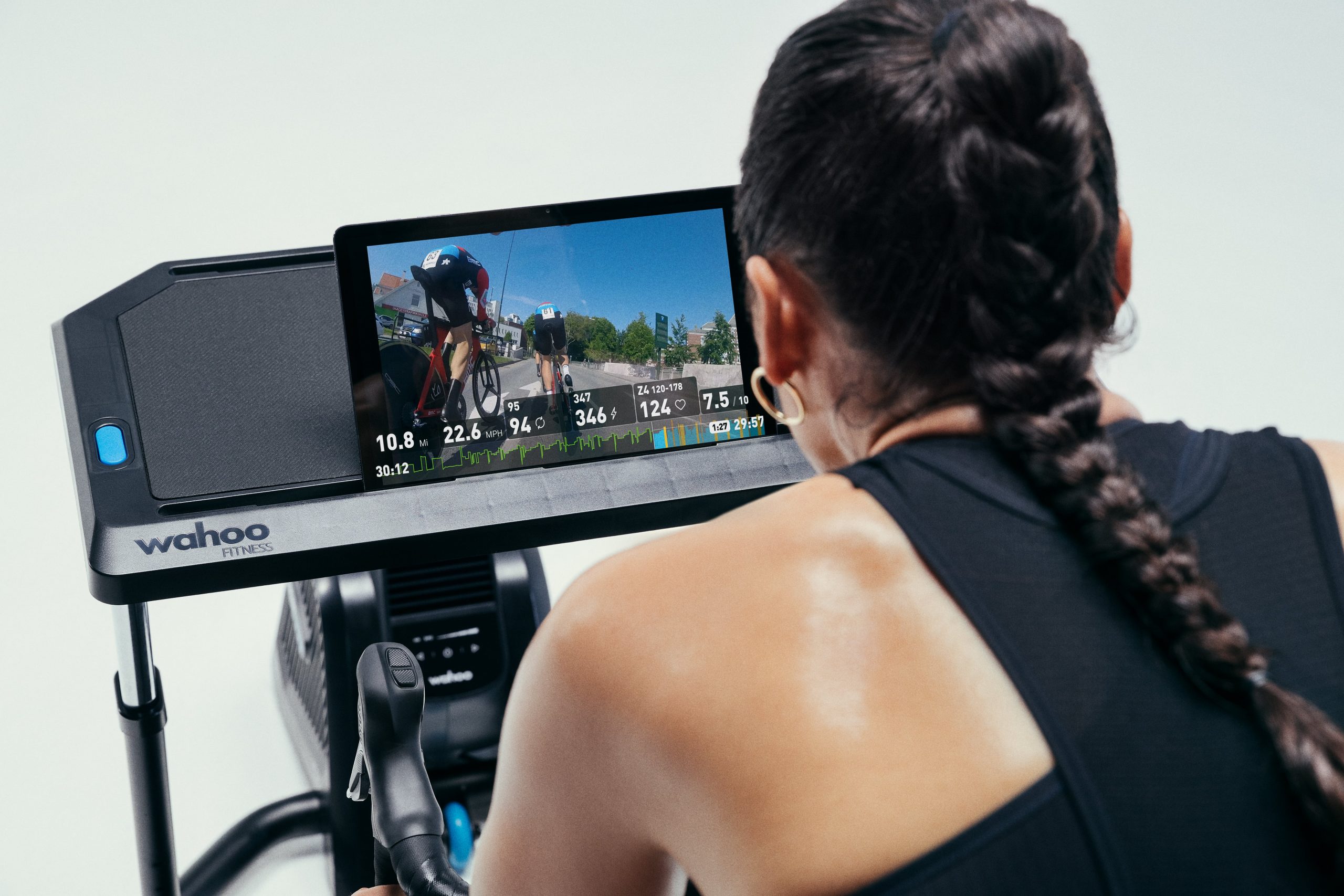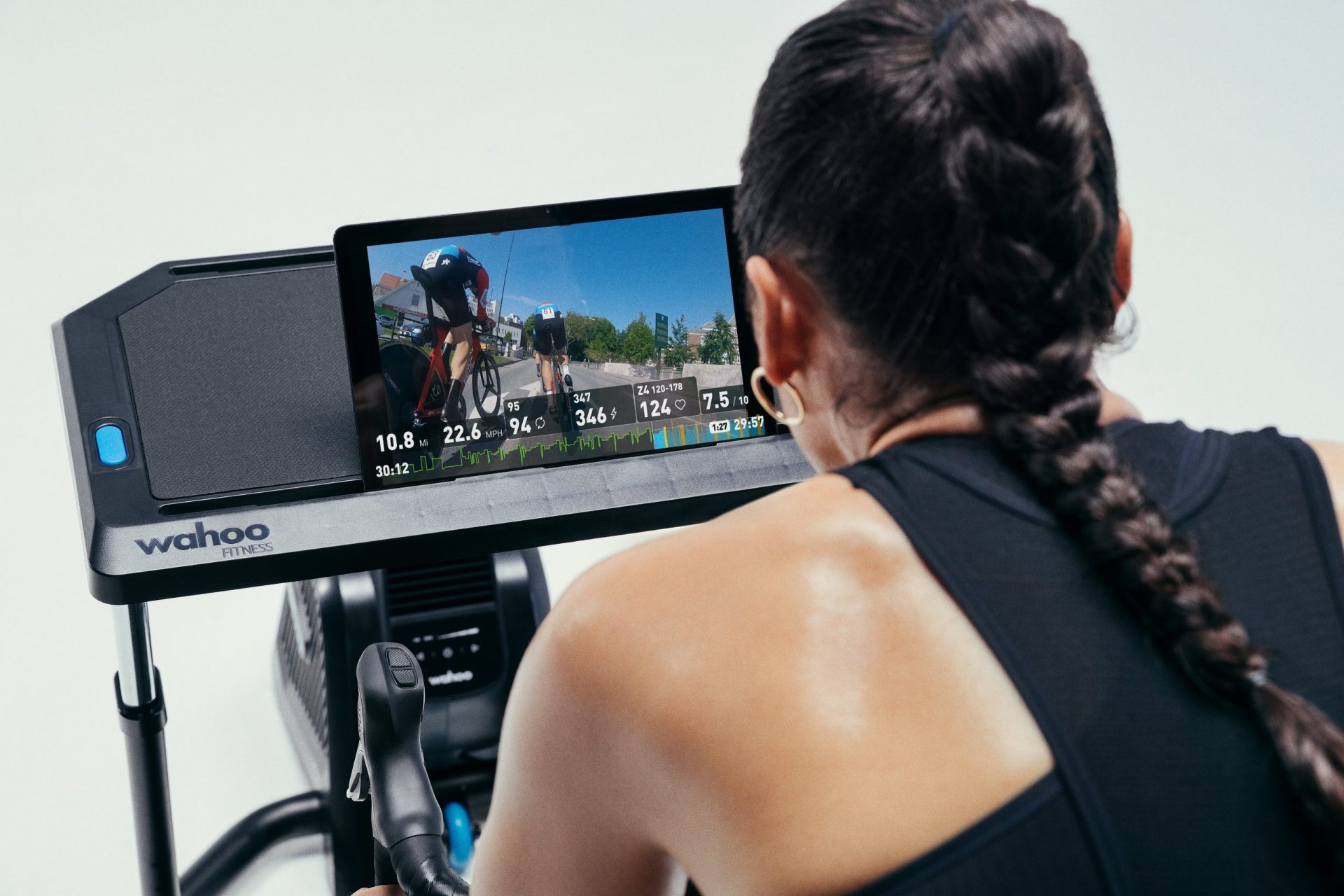
There was a point when riding the trainer was viewed for times only when the weather was too treacherous to ride outside, or for rehabilitation from an injury. Wintertime was the only season when cyclists could muster up the mental strength to subject themselves to riding in a fixed position for a few hours and wear out the treads on their tires.
With the addition of smart trainers to the market, cyclists and triathletes alike are moving many of their outdoor sessions indoors. Indoor training brings consistency and ease for completing workouts exactly as prescribed, especially with the addition of ERG mode.
Smart trainers, such as the KICKR, come equipped with two modes: level and ERG mode. Level mode is when you, the rider, control the resistance of the trainer and shift freely in order to produce your desired wattage. ERG mode is entirely different. In ERG mode, the trainer will automatically adjust the resistance in order to hit the pre-selected wattage target in a workout. You can think of it like a treadmill. You set a pace for the belt and you hold onto that pace for as long as you can. Whether you become fatigued or not the belt still moves at the prescribed pace. ERG mode does the same. You set the wattage, for example, 200 watts, and whether you pedal at 95 RPM or 65 RPM, the trainer will adjust the resistance to ensure each pedal stroke is putting out 200 watts. Need to stop the workout for any reason? ERG Easy Ramp gets you back into the effort gradually instead of requiring a leg-busting effort hit the power numbers.
ERG Mode Gear Selection and Why it Matters
First, let’s take a look at the design of the smart trainers to begin to understand why gear selection would make a difference. Smart trainers are designed to apply a specific resistance to the flywheel based on the speed and pre-selected power target. The smart trainer assumes that the variable to change is the resistance, assuming the flywheel speed remains constant. This can present a problem then when you try to change your cadence during an effort (either increase or decrease) when a higher power target comes on. There is a period of time, approximately 10 seconds, that your smart trainer will have to adjust the resistance of the flywheel because it was measuring resistance off of the previous speed. When you increase or decrease the speed of the flywheel, the trainer will have to adjust the resistance. In order to make the shift smoother, it is best to shift a few gears in order to create the least amount of impact change to the flywheel speed.
The inertia stored within the flywheel of your trainer can simulate different outdoor riding terrains. When riding indoors on a smart trainer there are some aspects to consider relative to each individual’s personal strengths and weaknesses when considering your gear choice in ERG mode:
- If you are a time trialist or sprinter who typically puts out most of your outdoor power in a big gear, then we would suggest replicating efforts indoors in ERG mode in a similar gear choice when performing sprint and time trial efforts.
- If you are trying to replicate climbing workouts on your smart trainer or prefer to ride in the small chainring, then the same idea applies; do workouts in ERG mode in smaller gears to replicate the same outdoor “feeling.” ERG mode allows riders to do workouts that replicate big gear, low cadence work. However, throwing your chain into 53×11 will generate a high speed within the flywheel that will not produce the same inertial load you were looking for if you were outdoors climbing.
The opposite can also be true if you try to perform high cadence work in ERG mode in a small gear. The inertia of the flywheel will be reduced and will feel as if you’re trying to spin up a climb rather than on the flats.
Whether working in a big or small gear, it is important to think about how your trainer is setting the resistance to generate a power target based on the speed of the flywheel. For example, going from a speed of 10 mph to 15 mph is a larger jump in speed than 25 to 30 mph from a resistance standpoint. If you have ever used ERG mode, then you may have experienced the “Spiral of Death,” where you find yourself in a small gear, and when the power increases, your cadence drops thus increasing the resistance and you find yourself grinding to a complete halt.
Tips for Training in ERG Mode:
If using ERG mode for workouts try the following:
- Keep your gearing in the mid-cassette range most of the time.
- If performing low RPM efforts, shift down to a small gear to hit the necessary high torque.
- High Cadence Work: be in the largest gear you can to build the momentum of the flywheel in order to spin it out!
- Set up your own personal test at home to simulate target efforts at a range of RPMs to determine which gearing “feels” the most similar to riding outdoors.
- Keep in mind that the type of workout and target cadence for a workout will be the driving factor for gearing choice in ERG mode.
- ERG mode helps us to mentally check out for a bit by not focusing on the pacing aspect of a workout (since the computer is doing this for you.) Be sure to switch it up and use Level Mode to learn how to pace yourself appropriately for any given efforts. Remember: ERG mode doesn’t exist in a race! (Not even a virtual race!)
- Don’t neglect the need for outdoor riding and skills (if you get too attached to ERG mode!) Learning how to appropriately select the right gears for an effort is an often overlooked skill that many riders learn over time through trial and error.


